Apps Zone

Grand Gangsters 3D
The Intricate Dynamics of Gang Wars in Urban Environments
Gang wars, as multifaceted social and criminal phenomena, offer a complex interplay of violence, power struggles, territorial control, and cultural identity within urban settings. At their core, these conflicts are deeply rooted in socio-economic disparities, marginalization, and the quest for dominance amidst limited legitimate opportunities, often manifesting as fierce confrontations over territory and influence. Understanding gang wars requires delving into the underlying structures of gang organization, which vary from loosely affiliated street crews to highly organized crime syndicates with intricate hierarchies and trading networks. These groups do not only engage in violent turf battles but also participate in sophisticated illegal enterprises like drug trafficking, extortion, and arms dealing, which finance their ongoing operations and expansions. The ramifications of gang warfare stretch beyond immediate physical violence, influencing urban development, local politics, and community cohesion. For instance, control over certain neighborhoods often dictates access to illicit economies but also affects legitimate businesses that either struggle or collaborate with these entities. The psychological impact on residents, ranging from fear to normalized violence, perpetuates cycles of instability. Moreover, the gang wars themselves evolve with cycles of retaliation and escalation, frequently triggered by assassinations, betrayal, or encroachment on perceived sacred grounds. Such dynamics are exacerbated by the introduction of firearms and advanced weaponry, transforming confrontations into deadly engagements that challenge law enforcement capabilities. Notably, in many urban settings, the codes of loyalty and honor among gang members shape negotiation patterns and conflict resolutions, where breaking these codes can lead to severe retributions. These social rituals and internal justice mechanisms function parallel to formal legal systems, underscoring a complicated duality within gang-controlled zones. The role of leadership in these groups is critical; charismatic and strategic leaders often manipulate both violent and diplomatic tactics to consolidate power. Their decisions impact not only the immediate survival of their factions but also their long-term influence in the criminal underworld. Over time, these leaders may transition from mere street thugs to influential power brokers, negotiating directly with political figures or other criminal enterprises to sustain their dominance. The ever-changing alliances, betrayals, and rivalries among gangs contribute to a volatile urban tapestry, making gang wars a continually shifting blot on city landscapes. Technological factors such as communication tools, surveillance avoidance tactics, and social media propaganda also have transformed gang warfare, enabling more coordinated and covert operations previously impossible. Cultural expressions through music, graffiti, and fashion serve dual purposes of identity affirmation and psychological warfare, broadcasting messages of intimidation and territorial claims to rivals and the wider public. This intricate network of violence, culture, and economics defines gang wars not just as sporadic outbursts of crime but as deeply embedded systems that challenge urban governance and social stability at their core.
The Evolution of Crime Adventures: From Street-Level Heists to Grand Criminal Syndicates
Crime adventures, as conceptualized in both real-life underworld activities and their representations in media and interactive entertainment, have undergone a remarkable evolution reflecting changes in societal attitudes, technological advancements, and criminal methodologies. Initially centered on simple, opportunistic crimes like muggings, petty thefts, or small-scale drug deals, the concept of crime adventures has expanded into elaborate, multi-faceted operations involving strategic planning, resource management, and complex interpersonal dynamics. Real-world criminal enterprises now operate similarly to corporations, implementing hierarchical structures, division of labor, and risk assessment models to maximize profits while minimizing exposure. This shift is mirrored in the immersive narratives of modern crime-themed entertainment, most notably video games that immerse players in the role of emerging gang leaders crafting their dominions. These interactive experiences often incorporate elements of open-world exploration, mission-based objectives, and sandbox-style freedom to simulate the tension and excitement of navigating a criminal underworld. As such, the boundary between mere crime acts and adventure narratives blurs, creating a genre where strategic decision-making and action converge. The incorporation of vehicle theft, high-speed chases, and shootouts dramatizes the physical hazards associated with criminal exploits, while negotiating alliances and managing rivalries add layers of political intrigue and social complexity. Technically, developers simulate realistic physics engines, AI behaviors that mimic gang interactions, and dynamic urban environments that react to player actions, resulting in immersive gameplay that educates as well as entertains. Importantly, these narratives often highlight moral ambiguity, allowing players to weigh choices between ruthless criminality and pragmatic survival, thereby reinforcing the unpredictable nature of lives immersed in crime. The depiction of weaponry—from melee combat to firearms—combined with tactical use of cover and mobility counters, introduces practical combat scenarios drawn from real gang conflicts. Advanced AI systems enable rival gangs to respond adaptively to player strategies, creating ongoing challenges that mirror real-life gang wars’ fluid nature. Additionally, the inclusion of multiple mission types, such as stealing various vehicle models, evading police forces with sophisticated chase mechanics, and territorial takeovers, reflect both practical criminal skillsets and thematic storytelling components. These crime adventures are increasingly nuanced, emphasizing not only the external threats but internal group dynamics, such as managing loyalty, fear, and motivation within a gang. From a theoretical standpoint, these experiences provide insights into criminology, sociology, and economics by simulating the ramifications of choices in high-stakes, often lawless environments. For example, decisions about whether to expand territory through negotiation or violent conquest replicate real gang dilemmas, exposing the costs and benefits inherently tied to power. The evolution of crime adventures thus embodies a rich amalgam of thrilling narratives and strategic engagement, offering a comprehensive view into the underbelly of urban crime worlds that captivate audiences and inform understandings of criminality on multiple levels.
The Technical Craftsmanship Behind Realistic Crime Game Design
Creating immersive crime adventures and gang wars experiences demands sophisticated technical craftsmanship that blends advanced graphics, intelligent AI, and intuitive user interfaces to produce compelling and believable simulations. A paramount aspect is the development of realistic 3D graphics that render expansive urban environments, detailed character models, and dynamic vehicle mechanics, all designed to immerse players deeply within the game's world. Developers engage in meticulous level design to recreate sprawling cityscapes, including distinct neighborhoods, landmarks, and interactive elements that respond variably to player input. Techniques such as procedural generation and scripted events ensure that the environment feels alive, populated with NPCs whose behavior impacts the narrative flow. The AI programming powering rival gangs and police units integrates complex behavior trees and decision-making algorithms, enabling non-player characters to adapt their tactics, form ambushes, or launch pursuits realistically. Pathfinding systems allow both pedestrians and vehicles to navigate urban terrain efficiently while reacting to traffic conditions, obstacles, and player actions, enhancing the realism of high-speed chases or street battles. Additionally, physics engines simulate accurate vehicle handling, projectile trajectories, and environmental destruction, adding tactical depth and visual fidelity to every combat interaction or cinematic moment. Control schemes, particularly for touchscreens, are designed for intuitive responsiveness, balancing accessibility with nuanced maneuvers such as aiming precision, evasive driving, or melee combat sequences. Developers often iterate on parameters like weapon recoil, damage modeling, and collision responses to strike a balance between challenge and fairness, ensuring that gameplay remains engaging without becoming frustratingly difficult or trivial. Sound design also plays a critical role, incorporating environmental audio cues, dynamic music shifts, and realistic weapon effects that heighten immersion and provide functional feedback during gameplay. Underpinning these elements is a sophisticated mission scripting framework allowing for diverse objectives spanning vehicle theft, turf conquest, and escape sequences. Such scripts factor in player choices and random elements to create varied playthroughs that encourage experimentation and replayability. On the technical backend, optimization practices are essential to maintain smooth frame rates and reduce latency across varying hardware capabilities, especially for mobile platforms where resource constraints are more pronounced. This optimization ensures broad accessibility without sacrificing graphical or gameplay richness. User interface design also supports clear communication of objectives, status indicators, and in-game maps that assist players in strategizing their moves through complex urban layouts. From a development cycle perspective, creators rely on iterative testing, player feedback, and analytics to refine difficulty curves, balance weapon effectiveness, and calibrate AI aggression to sustain long-term appeal. The integration of multiplayer components or leaderboards adds a layer of social competition, further enriching the game experience. Technology further enables narrative branching where player decisions within gangs influence story outcomes, affiliations, and available missions, introducing profound depth into the crime adventure genre. Overall, the technical craftsmanship behind these experiences melds artistry with engineering, producing a seamless blend of excitement, challenge, and realism that invites players to immerse themselves in the perilous yet thrilling world of gang wars and criminal enterprises.
The Psychological and Sociological Implications of Virtual Gang Warfare
The immersive nature of virtual gang warfare in criminal adventure games invites a profound examination of the psychological and sociological implications for players and society at large. On a psychological level, these games serve as channels for vicarious experiences of power, control, and risk-taking in environments that would be perilous or impossible in real life. The adrenaline rush from high-stakes missions, evading police pursuits, or narrowly escaping ambushes activates reward pathways in the brain, reinforcing engagement and motivation to progress. This stimulation can satisfy intrinsic desires for mastery, achievement, and social recognition embedded within competitive and narrative frameworks. However, repeated exposure to simulated violence and the normalization of criminal behavior may contribute to desensitization, altering perceptions of morality and acceptable social conduct for some individuals. This effect is intensified when players assume leadership roles within virtual gangs, making decisions that balance loyalty, aggression, and ethical compromises. Sociologically, the representation of gang culture and streets in these games reflects, reinforces, or sometimes challenges societal attitudes toward crime, law enforcement, and urban decay. The portrayal of gangs as entities with distinct identities, codes, and hierarchies introduces players to complex social dynamics that extend beyond mere antagonism. Interactions within these virtual worlds can mirror real-world social issues such as poverty, systemic injustice, and the consequences of marginalization. Importantly, these gaming environments can foster empathy by illustrating the human motivations and conflicts behind violent acts, prompting players to consider the circumstances driving gang members rather than reducing them to stereotypes. Conversely, the risk exists that glamorization of criminal lifestyles might inspire imitation or romanticization among impressionable demographics, necessitating responsible content creation and contextual framing. Virtual gang warfare also functions as a social microcosm where collaboration and competition among players or AI-controlled factions dynamically model human group behaviors like alliance formation, resource negotiation, and conflict resolution. Players must navigate trust, betrayal, and power struggles, gaining indirect lessons about leadership, negotiation, and social strategy. Such interactions can enhance cognitive flexibility and problem-solving but also expose players to toxic behaviors commonly associated with competitive gaming communities. Furthermore, the escapism offered by these games provides psychological relief from stress or social anxieties, allowing players to experiment with identities and social roles in consequence-free environments. This can have therapeutic benefits but also potential drawbacks if used exclusively to avoid real-world challenges. At a societal level, the popularity of gang warfare games raises questions about cultural consumption patterns, media influence on crime perceptions, and the ethical responsibilities of developers in shaping content. Debates persist around whether these virtual experiences contribute to increased awareness or perpetuate harmful myths about crime and violence. Empirical studies investigating player behavior and attitudes post-engagement with crime-themed games highlight the need for nuanced understanding rather than simplistic causal links. In essence, virtual gang warfare sits at the intersection of entertainment, psychology, and social commentary, offering a lens through which contemporary issues of violence, power, and identity can be explored and understood in innovative ways.
Experiencing the Thrill: Engaging with Gang Wars and Crime Adventures on Modern Platforms
Engaging with the exhilarating world of gang wars and thrilling crime adventures has never been more accessible or immersive thanks to advancements in gaming platforms and distribution channels. Whether seeking adrenaline-charged action sequences, strategic planning challenges, or rich narrative immersion, players can now dive headfirst into sprawling urban jungles where the stakes are high, and every decision matters. The mobile gaming revolution has brought these experiences to the palms of millions of users, with titles that combine stunning 3D graphics, intuitive touch controls, and multifaceted gameplay packed into devices easily carried anywhere. On Android devices, gamers can access compelling crime adventures that feature diverse mission types ranging from vehicle theft to high-speed chases, all orchestrated within detailed cityscapes where rival gangs and law enforcement animate the streets with evolving conflicts. The seamless integration of shooter mechanics, hand-to-hand combat, and auto racing elements presents a unique hybrid gameplay style that caters to varied player preferences while emphasizing reactive decision-making and precise control. Players are tasked with choosing their approach—whether stealth, aggression, or negotiation—as they climb the ranks from street-level enforcer to dominant gang boss, each step laden with increasing challenges and sophisticated adversaries. Such games also often incorporate persistent open worlds with expansive maps divided into multiple zones, encouraging exploration and territorial conquest. The availability of over a dozen weapons and vehicles enhances customization and tactical variety, allowing each player to craft a bespoke criminal persona aligned with their playstyle. Real-time weather, dynamic traffic, and NPC behaviors contribute further to immersion and unpredictability. These titles benefit greatly from updates and community feedback, regularly introducing new missions, environments, and gameplay features that keep the experience fresh and engaging. Social integration via online leaderboards or cooperative missions offers a competitive edge or camaraderie among players navigating the brutal underworld. The convenience of mobile platforms enables gaming sessions that fit various lifestyles, from quick bursts during commutes to extended marathons on leisure days. Meanwhile, opportunities to download and install these cutting-edge crime adventures on different platforms provide diverse entry points for fans. For instance, Download for Android lets users instantly step into the action with a few taps, enjoying optimized performance tailored for mobile devices. While versions for iPhone or other systems may still be in development or less prominent, the expanding ecosystem ensures growing accessibility. This contemporary confluence of technology, storytelling, and gameplay innovation embodies the thrilling allure of gang wars and crime adventures, allowing players worldwide to immerse themselves in chaotic, dangerous, and electrifying criminal worlds without leaving the comfort of their homes or pockets.
Share Your Opinion
Your Email Will Not Be Published.
All Rights Reserved © Apps Zone 2025

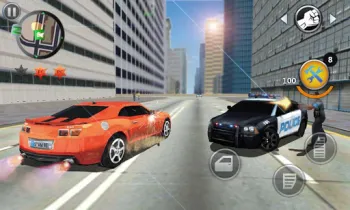
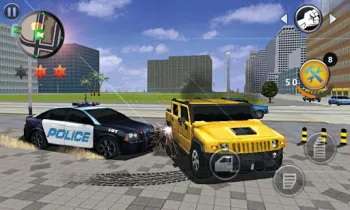
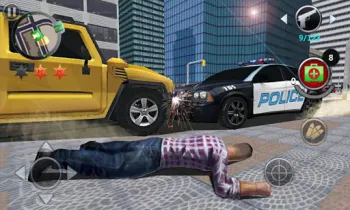
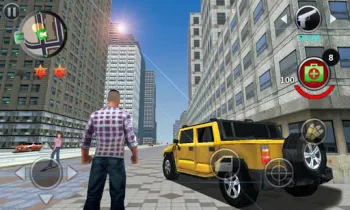
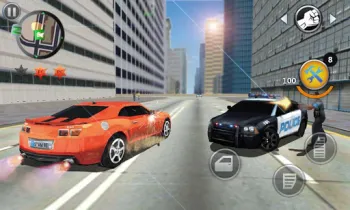
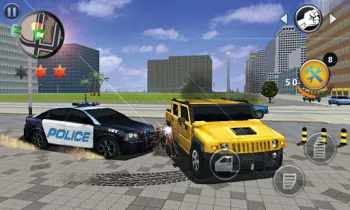
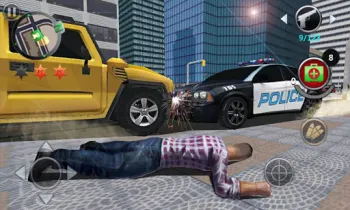




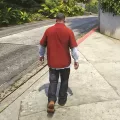



















A Google user
Its really amazing, I have GTA SA, VC and III in my PC and I liked to play all of these games. And now, I can enjoy the same fun in my phone too! I...
A Google user
I previously had this game in my old phone about a year ago and it was my favorite game in that time, but I was uninstalled it for some personal re...
Santo Khan
I had played this game last 2015-16 when I was kid . and I was searching the game for almost 5 years. And at last I found it . so now you can feel ...
Shreekumar Limbu
This is good game but there should be store for guns and there should be smart phones and jump option and we should be free to shoot any things now...
A Google user
I really love this game. So smooth when drive, it awesome. But citizen cars need to be more plenty at least some area has to be a little bit busy, ...